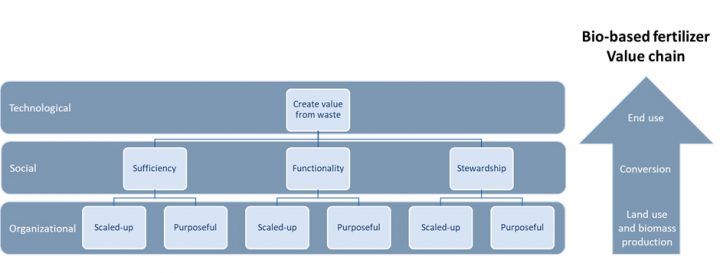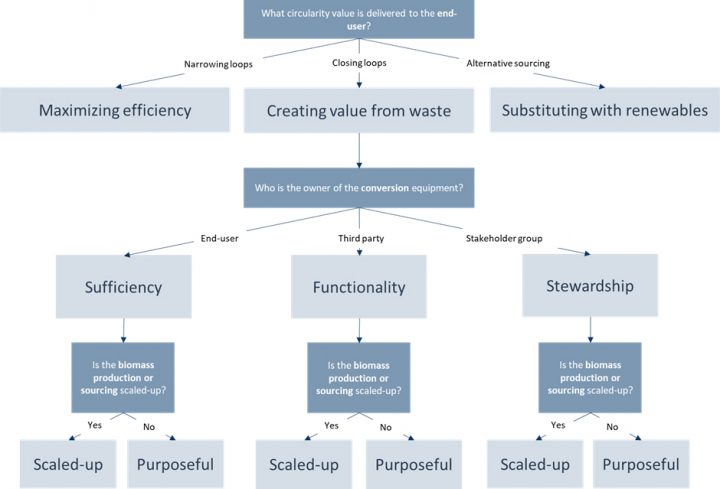A typology of sustainable circular business models
As an approach to sustainable development, circular business models are increasingly being developed. However, many circular business models focus on environmental or technological contributions to sustainability rather than considering all dimensions of sustainability simultaneously.
Based on the well-known Sustainable Business Model Archetypes by Nancy Bocken and colleagues (2014), a hierarchical business model typology can be developed that allows a stepwise exploration of sustainable business model innovation opportunities incorporating an environmental, social and economic dimension. This typology allows for a distinction of 6 types of business models within each category of technological innovation: scaled-up sufficiency, purposeful sufficiency, scaled-up functionality, purposeful functionality, scaled-up stewardship and purposeful stewardship.
What do these business models entail? Sufficiency business models reduce consumption and production or provide high-quality durable products. Functionality business models, however, satisfy user needs without users having to own products. Finally, stewardship business models intend to proactively engage with stakeholders to ensure their long-term health and wellbeing. The distinction between scaled-up and purposeful business models is as follows: scaled-up businesses aim to scale up sustainability solutions to maximize benefits for society and the environment, while a purposeful business prioritizes the delivery of social and environmental benefits (for example by being embedded in the community).
This is, of course, only a general definition of different types of sustainable and circular business models. It merely provides a direction or a pathway for sustainable business model innovation. We can, however, link this typology to value chains within the bioeconomy. This gives us some insight in the roles of value chain actors within each sustainable circular business model. For example, we can link the social dimension of sufficiency, functionality or stewardship to the owner of the conversion technology: it can be an end-user (sufficiency), a third party (functionality) or a stakeholder group (stewardship). Additionally, we can associate the organizational level to the land use and biomass production: is it scaled-up or not? The figure below provides a decision tree as practical guidance in the development of sustainable and circular business models based on value chain elements.
This typology will be elaborated upon in the soon to be published working paper “A typology of Sustainable Circular Business Models based on a hierarchical model and applications in the Bio-economy”.
References:
Bocken, N. M. P., Short, S. W., Rana, P., & Evans, S. (2014). A literature and practice review to develop sustainable business model archetypes. Journal of Cleaner Production, 65, 42–56. https://doi.org/10.1016/j.jclepro.2013.11.039



